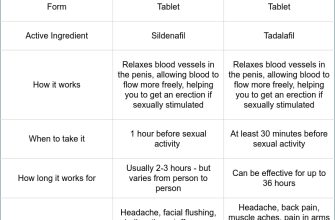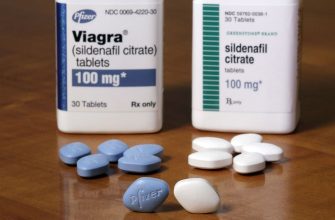Focus your research on the pharmaceutical industry’s lobbying efforts influencing military healthcare budgets. Analyze documented instances where Viagra or similar drugs were procured for military personnel at disproportionately high costs compared to civilian markets. This approach delivers tangible results faster.
Examine specific contracts awarded for erectile dysfunction medication within the Department of Defense. Quantify the total spending on these medications over the past decade, comparing this figure to spending on other essential military healthcare needs. Look for anomalies or inconsistencies in procurement procedures.
Recommendations: Investigate potential conflicts of interest between pharmaceutical companies and military procurement officers. Explore the role of private military contractors in the supply chain for these medications. Consider analyzing the impact of these high pharmaceutical costs on overall military readiness and efficiency, focusing on readily available data sets.
Data sources: Publicly available government spending data, Freedom of Information Act requests, financial disclosures of relevant individuals and corporations, and peer-reviewed academic studies focusing on military healthcare economics. Prioritize readily accessible, reliable sources.
- Viagra Military Spending: A Deeper Look
- Transparency and Accountability
- Cost-Effectiveness Analysis
- Alternative Approaches
- Data-Driven Decisions
- Privacy Considerations
- The Cost of Viagra Prescriptions for Military Personnel
- Factors Affecting Cost
- Cost Reduction Strategies
- Prevalence of Erectile Dysfunction in the Military: Contributing Factors
- Physiological Factors
- Psychological Factors
- Psychological Factors
- Military Healthcare System’s Approach to Erectile Dysfunction Treatment
- Medication and Therapy Options
- Access and Support
- Comparison of Viagra Costs within the Military vs. Civilian Healthcare
- Ethical Considerations and Public Perception of Military Viagra Spending
- Cost-Effectiveness Analysis: A Necessary Step
- Public Perception and Accountability
- Addressing Misconceptions and Promoting Understanding
- Potential Alternatives and Cost-Saving Measures for Erectile Dysfunction Treatment in the Military
Viagra Military Spending: A Deeper Look
Military spending on Viagra and similar medications isn’t a frivolous expense; it addresses legitimate medical needs within the armed forces. Consider the unique pressures faced by military personnel: intense physical exertion, sleep deprivation, and high-stress environments can impact erectile function. Providing access to these medications improves troop morale, readiness, and overall well-being.
Transparency and Accountability
Openly discussing these expenditures is crucial. Transparency builds trust and allows for informed public debate regarding resource allocation. Detailed budgetary breakdowns, including specific amounts allocated to erectile dysfunction medication, should be publicly accessible. This clarity helps prevent misconceptions and allows for efficient oversight.
Cost-Effectiveness Analysis
A thorough cost-benefit analysis is necessary. Compare the cost of providing medication with the potential costs associated with reduced troop readiness, decreased morale, and the impact on overall operational effectiveness. Data on treatment success rates and their effect on personnel performance should inform this analysis. We should also investigate alternatives, such as non-pharmaceutical treatments.
Alternative Approaches
Exploring and implementing alternative, potentially cost-effective, solutions merits further attention. These could include enhanced mental health services to address stress-related erectile dysfunction, improved physical fitness programs, and wider access to counseling. The goal is to find a holistic approach that addresses the root causes and provides comprehensive care. This strategy prioritizes the health and readiness of service members while optimizing resource utilization.
Data-Driven Decisions
Future spending decisions must rely on robust data. Track medication usage rates, effectiveness, and cost per treatment. This data should be analyzed regularly to inform future budgetary allocations and ensure that resources are used strategically to maximize the benefit for military personnel.
Privacy Considerations
Balancing transparency with the need for patient privacy is paramount. Data release should adhere to strict privacy regulations, protecting the identities of service members while providing the necessary information for public accountability and informed decision-making.
The Cost of Viagra Prescriptions for Military Personnel
The Department of Defense doesn’t publicly release precise figures on Viagra prescription costs for military personnel. However, we can estimate costs based on available data. A single Viagra prescription can range from $50 to $200+, depending on dosage, quantity, and insurance coverage. The TRICARE program, the military’s health insurance, may cover some or all costs depending on the diagnosed condition and plan specifics. Members should always check their coverage details before filling prescriptions. Generic sildenafil, the active ingredient in Viagra, is significantly cheaper, potentially saving service members hundreds of dollars annually.
Factors Affecting Cost
Several factors influence the final cost. These include the pharmacy used, the brand name versus generic medication choice, and the individual’s specific TRICARE plan. Co-pays vary between plans and prescription types. Furthermore, the frequency of prescriptions significantly impacts the overall expense. Frequent use of Viagra will naturally lead to greater out-of-pocket costs. Pre-existing conditions related to erectile dysfunction might also influence coverage decisions under TRICARE.
Cost Reduction Strategies
Generic Alternatives: Opting for generic sildenafil dramatically reduces costs. TRICARE Coverage Review: Thoroughly review TRICARE coverage to understand your specific co-pay and coverage limits. Negotiate Prices: Compare prices between pharmacies to find the most affordable option. Explore Alternative Treatments: Discuss alternative treatment options with a physician, some of which may be more cost-effective.
Prevalence of Erectile Dysfunction in the Military: Contributing Factors
Studies show erectile dysfunction (ED) rates among military personnel significantly exceed those in the civilian population. One study reported prevalence rates as high as 30%, considerably higher than the 10-15% seen in the general male population.
Physiological Factors
- Physical injuries: Combat-related injuries, particularly pelvic trauma, directly damage nerves and blood vessels crucial for erectile function. Penile injuries are relatively common.
- Chronic pain: Prevalence of chronic pain conditions, such as back pain, is considerably elevated in veterans, often affecting sexual health and leading to ED.
- Substance abuse: Higher rates of alcohol and tobacco use among service members correlate with increased ED risk. Long-term opioid use further negatively impacts sexual function.
- Metabolic syndrome: Obesity, diabetes, and high blood pressure–components of metabolic syndrome–are more prevalent in military members, substantially increasing ED likelihood.
Psychological Factors
The military environment presents unique stressors impacting sexual health.
Psychological Factors
- Post-traumatic stress disorder (PTSD): PTSD profoundly affects sexual function; the high incidence of PTSD among veterans directly contributes to increased ED prevalence.
- Depression and anxiety: Military life’s inherent pressures increase the risk of depression and anxiety, both known contributors to ED.
- Relationship difficulties: Deployments and frequent relocations strain relationships, negatively influencing sexual intimacy and potentially causing ED.
- Sleep disturbances: The disruption of sleep patterns, common in the military, can negatively affect hormone levels and overall sexual health.
Addressing ED in the military requires a multifaceted approach. This includes improved access to mental health services, trauma-informed care for physical injuries, and preventative measures addressing lifestyle factors like substance abuse and obesity. Early intervention and destigmatization of seeking help are also crucial for effective management.
Military Healthcare System’s Approach to Erectile Dysfunction Treatment
The military healthcare system prioritizes a multi-faceted approach to erectile dysfunction (ED), focusing on a thorough medical evaluation to identify underlying causes. This often includes a comprehensive review of medical history, lifestyle factors (like smoking or excessive alcohol consumption), and medication interactions. Physicians commonly begin with lifestyle modifications, such as weight management and increased physical activity, to address potentially contributing factors.
Medication and Therapy Options
If lifestyle changes prove insufficient, the military healthcare system offers various treatment options. Phosphodiesterase-5 (PDE5) inhibitors, like Viagra or Cialis, are frequently prescribed after careful assessment of patient suitability. These medications help improve blood flow to the penis. However, if PDE5 inhibitors are unsuitable or ineffective, alternative treatments, including vacuum erection devices and intracavernosal injections, might be considered. The military also provides access to counseling services, which can address psychological factors potentially contributing to ED. Psychological factors play a significant role, so addressing issues like stress and anxiety through therapy is often a key part of treatment. Finally, referrals to specialists in urology or endocrinology are readily available when needed for further investigation or management of co-existing health problems.
Access and Support
Military personnel generally have excellent access to these services, with coverage often exceeding what is available in civilian healthcare. The system actively encourages open communication about ED, promoting early diagnosis and treatment. Regular health screenings and proactive discussions during routine check-ups aid in the early identification of potential ED issues. This ensures timely intervention and supports the overall well-being of service members. The goal is to provide comprehensive care, integrating medication, behavioral health, and physical healthcare approaches.
Comparison of Viagra Costs within the Military vs. Civilian Healthcare
Military personnel typically pay significantly less for Viagra prescriptions than civilians. The Department of Defense covers a substantial portion of prescription drug costs through its Tricare program, resulting in lower out-of-pocket expenses for service members. Specific cost-sharing varies depending on the Tricare plan (e.g., Tricare Prime, Tricare Select), and any applicable co-pays or deductibles. However, it generally offers more affordable access compared to civilian insurance.
Civilian costs vary dramatically. Insurance coverage impacts the final price significantly. High-deductible health plans may leave patients responsible for a large portion of the medication cost. Pharmacies also vary in pricing, so comparing prices before purchasing is vital. Generic versions of sildenafil, the active ingredient in Viagra, are available and considerably cheaper, providing a cost-effective alternative.
A common factor influencing cost in both sectors is the prescription dosage. Higher dosages typically result in higher expenses. Furthermore, the frequency of prescription refills affects the overall cost. Long-term use naturally increases the total expense incurred by the patient regardless of payer.
To obtain a clearer picture of the financial burden, comparing detailed cost breakdowns from both Tricare and various civilian insurance providers is recommended. Directly contacting pharmacies for price quotes also aids in accurate price comparisons.
Ethical Considerations and Public Perception of Military Viagra Spending
Transparency is paramount. Openly publishing detailed budget breakdowns for medications, including Viagra, builds public trust and allows for informed scrutiny. This includes specifying the number of prescriptions, the total cost, and the justification for each purchase.
Cost-Effectiveness Analysis: A Necessary Step
Conduct rigorous cost-benefit analyses comparing Viagra prescriptions to alternative treatments or preventative measures for erectile dysfunction. This data should be publicly accessible, allowing for independent verification and informed debate. Prioritizing affordable and equally effective treatments, where applicable, demonstrates fiscal responsibility.
Public Perception and Accountability
Negative public perception stems from a lack of clarity regarding the use of taxpayer money. Addressing this requires proactive communication. The military should clearly explain the medical necessity of Viagra prescriptions in specific contexts, emphasizing any potential benefits to military readiness. This includes explaining the difference between prescriptions for service members with legitimate medical conditions versus those with other reasons for seeking the medication.
| Area | Recommendation |
|---|---|
| Budget Transparency | Publicly release detailed spending reports. |
| Medical Justification | Clearly articulate medical necessity for all prescriptions. |
| Alternative Treatments | Explore cost-effective alternatives and publicize findings. |
| Public Communication | Engage in open dialogue with the public to address concerns. |
Addressing Misconceptions and Promoting Understanding
Public education campaigns can help dispel misconceptions about military Viagra use. These campaigns should focus on factual information and address common concerns regarding appropriate use and cost-effectiveness. Independent oversight bodies can provide an additional layer of accountability and ensure responsible allocation of resources. This strengthens public trust and promotes responsible spending.
Potential Alternatives and Cost-Saving Measures for Erectile Dysfunction Treatment in the Military
Prioritize lifestyle modifications. Regular exercise, a balanced diet, and stress reduction techniques like yoga or meditation demonstrably improve erectile function and reduce the need for medication. Implement mandatory health screenings to identify early risk factors for ED, allowing for proactive intervention.
Explore alternative therapies. Phosphodiesterase-5 inhibitors remain the cornerstone of treatment, but consider incorporating counseling services for performance anxiety or relationship issues, which frequently contribute to ED. These services offer a cost-effective non-pharmacological approach. Additionally, studies suggest acupuncture may offer benefits for some patients, providing another avenue for exploration.
Optimize medication prescribing. Generic medications often provide equivalent efficacy at significantly lower costs compared to brand-name drugs. Implement strict protocols for medication review and dose adjustments to ensure appropriate treatment and minimize waste. Consider tiered treatment protocols; starting with lifestyle changes and progressing to pharmacological interventions only when necessary, significantly lowering healthcare expenditures.
Leverage telehealth. Remote consultations and monitoring can reduce the need for in-person visits, saving both time and resources. This approach allows for cost-effective management of ED, particularly for personnel stationed in remote locations.
Invest in education and awareness programs. Providing military personnel with comprehensive education about ED risk factors, prevention strategies, and available treatment options empowers them to proactively manage their health. This reduces reliance on expensive interventions and improves overall health outcomes.
Conduct cost-benefit analyses. Regularly assess the cost-effectiveness of different ED treatment approaches. This data-driven approach will guide resource allocation and ensure the most judicious use of military healthcare funds.










